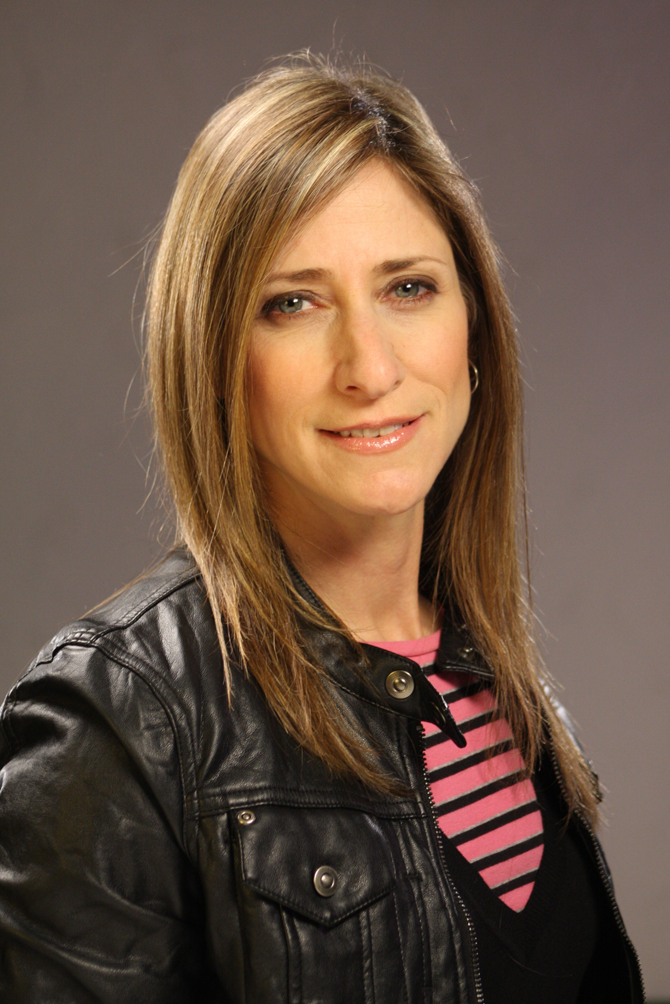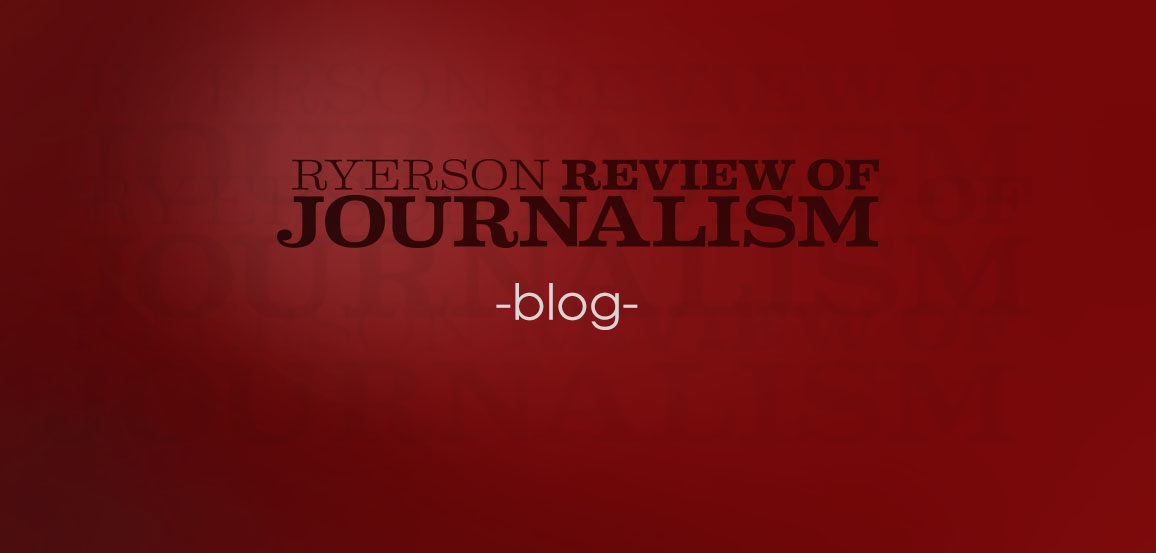Few journalists showed up for the press conference at the Sundance Film Festival. The movie was terrible, but film critic Katherine Monk attended because “there was actually nothing else going on.” She was one of the only women in the room. The director was just “blabbing with the boys” when a reporter asked him for his thoughts on 3D films. “Oh yeah,” said the director, “then you could, like, slice someone’s boobs off in 3D.” He stopped as he caught Monk’s eyes.
“Did you just say, ‘Cut off someone’s boobs in 3D’?” she asked.
“Yeah, I did.”
That’s when Monk realized she had a very different take on the movies than the boys in the room.
A national film critic for Postmedia Network Inc. since 2003, Monk is one of the only national female film reviewers in the country. (Formerly Canwest, Postmedia papers include the National Post, The Vancouver Sun, the Calgary Herald andMontreal’s The Gazette.) Although working in a field dominated by men means she’s often one of the few women in a room, it also means she can offer readers another perspective.
Monk never planned on becoming a critic. With undergraduate studies in English literature and a post-graduate degree in Film Studies from the University of British Columbia, Monk thought she’d be a director or a screenwriter. “Nobody in film school wants to be a film critic,” she says. She was editor of the student paper, The Ubyssey in her first year of grad school and in 1990, the Sun hired her to work two graveyard shifts a week while she finished her degree. That turned her on to reporting. “I really wanted to be an excellent news writer,” she says. “I wanted to excel at that.”
When she applied for a full-time job at the paper, Monk’s first assignment editor, Graham Rockingham, was rooting for her even though she didn’t have a journalism degree. “I was a fan because she was obviously a person who was willing to do anything and work her butt off to be able to get that job,” he says. She got it and soon worked nearly every beat, including city reporter and copy editor. Monk was the production editor on the editorial pages when the paper offered her the film critic position. “It had taken me a long time to chisel my way into the newsy field and be taken seriously and then suddenly going back to the toy department as a movie critic seemed like it was going to be the very wrong thing to do,” she says. “But I did it.”
Her first stint lasted about a year and a half until the paper needed a pop music critic and chose its youngest full-time employee. Monk lasted three years before then-editor John Cruickshank put her in movies again. “It seemed to me that film criticism was a more valuable thing for her to be doing, in terms of contribution to the newspaper,” he says. “There’s something disconcertingly candid about her and that makes for a great critic.”
Now 46, Monk prides herself on her honest opinions and says she never writes reviews to please readers. Of Tate Taylor’s 2011 summer hit, The Help, about a young, white female journalist who chronicles the oppression of black maids in 1960s-era Mississippi, Monk wrote: “It’s everything you might expect from Hollywood—when Hollywood busies itself with reaffirming its humanity, revising history and implanting sympathetic and pretty white people into an ugly racist past.” She calls the film an “overly contrived piece of race-based, Southern-fried sentiment designed to make women feel simultaneously empowered and flush with sisterly guilt.”
Monk believes her point of view often contrasts with that of male critics. “Our experience of life is generally quite different based on our gender, based on the fact that we have boobs and long hair and lips and all the rest of it,” she says. She was at odds with her colleagues on Sucker Punch, for example. The Toronto Star’s Peter Howell wrote, “The story fails to satisfy, or to make any sense whatsoever.” And CBC’s Eli Glasner called the film, “A monstrous edifice that crumbles under the sheer metric tonnage of its own crappiness.” But Monk argued that the film, about a young girl institutionalized by her evil stepfather, was “bound to alienate a large chunk of its core audience right off the bat because, unlike most stories in this new genre of high-concept, computer-generated science fiction, Sucker Punch is told from a distinctly feminist point of view—and not the faux brand of feminism stumped by Quentin Tarantino’s schoolgirl ninjas and avenging rape victims.” Although she received hate mailfrom feminists for that, she also brought up a point that male critics hadn’t.
Despite the value of a different take, female film critics are few and far between. “Women have traditionally been second-class citizens when it comes to work in the industry, the actual film production, and the same thing is true in film criticism,” says Jennifer Merin, president of the Alliance of Women Film Journalists. A 2007 study, “Thumbs Down: Representation of Women Film Critics at the Top 100 U.S. Daily Newspapers,” by Martha Lauzen, found that 47 percent of newspapers featuring film reviews did not have reviews by women. Only 12 percent had no reviews written by men. The research also found that 70 percent of film critics were male. Though that was a U.S. study, Monk sees a similar disparity in this country. It’s so marked that the women in the field notice each other immediately. “Oh my God, another woman on the beat!” she says mimicking her excitement. “We definitely recognize that we’re in the minority.”
Citing a minor but telling example, Monk says that most of the promotional swag sent out to film critics is geared towards men. “Today was the first day I actually got a girl t-shirt as a freebie present. It’s always a guy’s t-shirt,” says Monk. “It doesn’t matter what gift they’re giving away, it’s for guys and then if there’s a junket, they have it at the Playboy mansion.”
So Monk was pleasantly surprised when she joined Frances McDormand and three other female critics at a festival round tablefor Laurel Canyon. For once, Monk was not part of the minority. “We all looked around and we’re like, ‘Hey! It’s all girls! Wahoo.’” McDormand took off her earrings and showed them to the reporters and they chatted about “girly stuff” before talking about the movie—things they would never have done had a man been at the table. All the reporters realized, “Wow! This is actually really good colour for our pieces,” Monk says. “Frances McDormand is having a moment with us because we’re all chicks.”
And no one talked about 3D dismemberment.
About the author
Regan Reid was the Multimedia Editor for the Winter 2012 issue of the Ryerson Review of Journalism.

